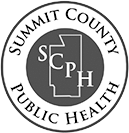(Page last updated 02/09/2022)
Familes Should Monitor for Symptoms at Home
School based temperature and symptom checks are no longer recommended. Instead, home-based monitoring is the preferred method of screening.
Instructions for Home-Based Screening: Schools can use the information below to share with caregivers and aid in daily reporting.
Home-Based Symptom Screening
Caregivers: If your child has any of the following symptoms, they might have an illness they can spread to others.
- Temperature of 100.4 degrees Fahrenheit or higher
- Repeated shaking with chills
- Fatigue
- Muscle of body aches
- Loss of taste or smell
- Congestion or runny nose
- Sore throat
- Cough (for students with chronic cough due to allergies or asthma, a change in their cough from usual)
- Difficulty breathing (for students with asthma, check for a change from their baseline breathing)
- Diarrhea or vomiting
- New onset of severe headache, especially with a fever
Check your child for these symptoms before they go to school. Check symptoms for changes from usual or baseline health.
If your child DOES have any of the symptoms above:
- Keep them home from school.
- Get your child tested for COVID-19.
- Contact your child’s school and report that your child is sick. The school may ask some additional questions to help determine when it is safe for your child to return to school and about other people who may have been exposed.
- CDC has a Coronavirus Self Checker* available in its website, which may help you make decisions about seeking medical care for possible COVID-19.
If your child does NOT have any of the symptoms above:
- Consider whether your child needs to see a healthcare provider and be tested for COVID-19. Even if they don’t have symptoms, your child should be tested if they:
- have been in close contact with someone with COVID-19, or
- have taken part in activities that puts them at higher risk for COVID-19 because they cannot physically distance as needed, such as participating in contact sports, attending a gathering with other children or family, or
- were asked or referred to get testing by a state, tribal, local, or territorial health department or healthcare provider.
- For the purposes of these criteria, daycare and school settings that implement multiple prevention strategies, such as universal and correct use of masks and physical distancing to the greatest extent possible, are not considered higher risk settings.
- If they do not have symptoms and do not meet any of the criteria above, send them to school as usual.
